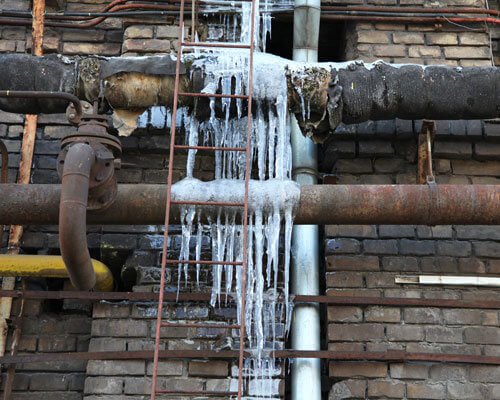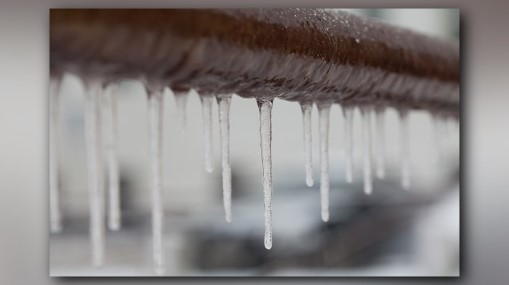Crucial Advice for Preventing Frozen Pipes in Cold Weather Conditions
Crucial Advice for Preventing Frozen Pipes in Cold Weather Conditions
Blog Article
The author is making several great pointers on Winter Plumbing Precautions: Preventing Frozen Pipes in general in this great article beneath.

Winter can ruin your pipes, specifically by freezing pipelines. Right here's exactly how to prevent it from happening and what to do if it does.
Introduction
As temperatures drop, the risk of icy pipelines increases, potentially bring about pricey repair work and water damage. Recognizing how to stop frozen pipelines is critical for home owners in cool climates.
Understanding Frozen Pipelines
What triggers pipelines to freeze?
Pipelines freeze when subjected to temperatures listed below 32 ° F (0 ° C) for extended durations. As water inside the pipelines freezes, it increases, taxing the pipe walls and possibly causing them to burst.
Dangers and damages
Icy pipelines can result in supply of water disruptions, home damages, and pricey repair work. Ruptured pipes can flooding homes and trigger considerable architectural damage.
Signs of Frozen Pipes
Determining icy pipes early can prevent them from rupturing.
Just how to identify icy pipes
Try to find reduced water circulation from faucets, uncommon odors or noises from pipelines, and visible frost on subjected pipelines.
Prevention Tips
Insulating at risk pipes
Cover pipelines in insulation sleeves or use warmth tape to shield them from freezing temperature levels. Focus on pipes in unheated or outside locations of the home.
Heating methods
Maintain indoor rooms appropriately heated up, specifically areas with pipes. Open cupboard doors to allow cozy air to flow around pipes under sinks.
Shielding Outside Pipes
Garden tubes and exterior taps
Detach and drain yard hose pipes prior to winter. Set up frost-proof faucets or cover exterior faucets with shielded caps.
What to Do If Your Pipes Freeze
Immediate activities to take
If you suspect icy pipelines, keep taps open to relieve pressure as the ice melts. Utilize a hairdryer or towels soaked in warm water to thaw pipes slowly.
Long-Term Solutions
Structural modifications
Think about rerouting pipelines far from exterior walls or unheated areas. Include extra insulation to attic rooms, cellars, and crawl spaces.
Upgrading insulation
Invest in top quality insulation for pipelines, attic rooms, and wall surfaces. Appropriate insulation aids maintain consistent temperature levels and reduces the danger of frozen pipelines.
Verdict
Avoiding icy pipes needs positive actions and quick actions. By recognizing the reasons, indicators, and safety nets, home owners can protect their pipes during winter.
6 Proven Ways to Prevent Frozen Pipes and Protect Your Home
Disconnect and Drain Garden Hoses
Before winter arrives, start by disconnecting your garden hoses and draining any remaining water. Close the shut-off valves that supply outdoor hose bibs and leave the outdoor faucet open to allow any residual water to drain. For extra protection, consider using faucet covers throughout the colder months. It’s also important to drain water from any sprinkler supply lines following the manufacturer’s directions.
Insulate Exposed Pipes
Insulating your pipes is an effective way to prevent freezing. Pipe insulation is readily available at home improvement stores and is relatively inexpensive. Pay close attention to pipes in unheated areas such as the attic, basement, crawl spaces, or garage. Apply foam insulation generously to create a buffer against the cold. You can also wrap your pipes in heat tape or thermostat-controlled heat cables for added warmth.
Seal Air Leaks
Inspect your home for any cracks or openings that could let in cold air. Seal any holes around the piping in interior or exterior walls, as well as the sill plates where your home rests on its foundation. Additionally, make sure to keep your garage door closed unless you’re entering or exiting. Leaving it open creates a significant air leak that can lead to frozen pipes.
Allow Warm Air Circulation
During cold snaps, it’s essential to allow warm air to circulate evenly throughout your home. Leave interior doors ajar to promote better airflow. Open kitchen and bathroom cabinets to help distribute heat consistently around the rooms. If you have small children or pets, be sure to remove any household chemicals or potentially harmful cleaners from open cabinets for safety.
Let Faucets Drip
A small trickle of water can make a big difference in preventing ice formation inside your pipes. When temperatures drop significantly, start a drip of water from all faucets served by exposed pipes. This continuous flow helps prevent the water from freezing. Additionally, running a few faucets slightly can relieve pressure inside the pipes, reducing the chances of a rupture if the water inside does freeze.
https://choateshvac.com/6-proven-ways-to-prevent-frozen-pipes-and-protect-your-home/

As a fervent person who reads on Preventing and dealing with frozen pipes, I was thinking sharing that segment was necessary. Be sure to pause to distribute this blog entry if you liked it. I cherish your readership.
Click Here Report this page